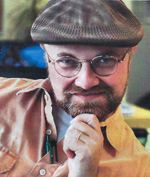By Eric George Tauber

SAN DIEGO –If you’ve driven down Park Blvd –past the Zoo and VA Center- you’ve spied a brightly colored building tucked to one side. Slow down and you’ll likely hear invigorating rhythms from a multitude drums. Peek inside and you’re in a swirl of lively murals. This is the World Beat Center and it’s where San Diego goes to celebrate Kwanzaa.
To most of us, Kwanzaa is like Hanukkah to Gentiles. We’ve heard of it, but we don’t really know it. This year, I decided to come out of my ignorance and walk in the light.
Kwanzaa began on Dec. 26th and continued through Jan. 1st. It is a non-sectarian holiday celebrating African heritage and is gaining in popularity throughout the African diaspora. This year, the festivities paid tribute to the late Nelson Mandela.
The evening started with a traditional African drum call. It worked. They had our undivided attention in very short order. Aria Alafi of the African Cultural Center led us in singing “Lift every voice and sing” (aka the “Black National Anthem”) backed up by the drums of Sené Africa. Personally, I could have used a power point to follow the words, but the audience seemed to know it well enough. Like a Black Spiritual, the melody and message are uplifting to the weary.
Sené Africa is a staple of the WBC and a rising voice in the San Diego music scene. I first caught them by chance at Claire de Lune’s and have loved them ever since. Born in Senegal, Amadou Fall plays an impressive 21-string instrument called a “kora” while guitarist Ibrahima Ba provides haunting vocals that inhabit your soul.
It just wouldn’t be Kwanzaa without some “Kuumba” (creativity), which was provided by local youth ensemble, Diva Works Dance Co. As a tribute to Mandela, they put together scenes from Sarafina, a powerful show about life in South Africa under Apartheid, with some Kuumba of their own.
The hip-hop dance off, boys serving girls, was fun to watch and the modern, interpretive dance was thoughtful and well executed. Zion Harris -a little man with glowing stage presence- paid tribute to Mandela’s childhood with some Zulu stick-fighting. And we were powerfully reminded of the ugliness of racism as they played out a scene in 1976 when black children marched for their right to a good education … only to be gunned down by white soldiers.
The lesson brought home by director Monica Harris is that “Freedom is not something to hope for, but to work for.”
At this Kwanzaa celebration, I felt the way most of them would probably feel at a Hanukah party, like an outsider looking in. And yet, certain parallels were apparent. The seven-branched candelabrum, the kinara, is modeled after the Menorah of the Temple. Each night, a candle is added, lit by the center candle. Like us, they look to their ancestors for strength, guidance and inspiration. They take pride in their heritage and distinctiveness as a people. Most importantly, they pass on these sentiments dor l’dor, from generation to generation. Realizing this made me feel much more at home.
If you’d like to join the crew working, singing and dancing for hope, a good bet is the World Beat Center on Monday, Jan 20th at 1 pm for their tribute to Martin Luther King Jr. It’s free and open to all.
*
Eric George Tauber is a freelance writer specializing in the arts. He may be contacted at eric.tauber@sdjewishworld.com